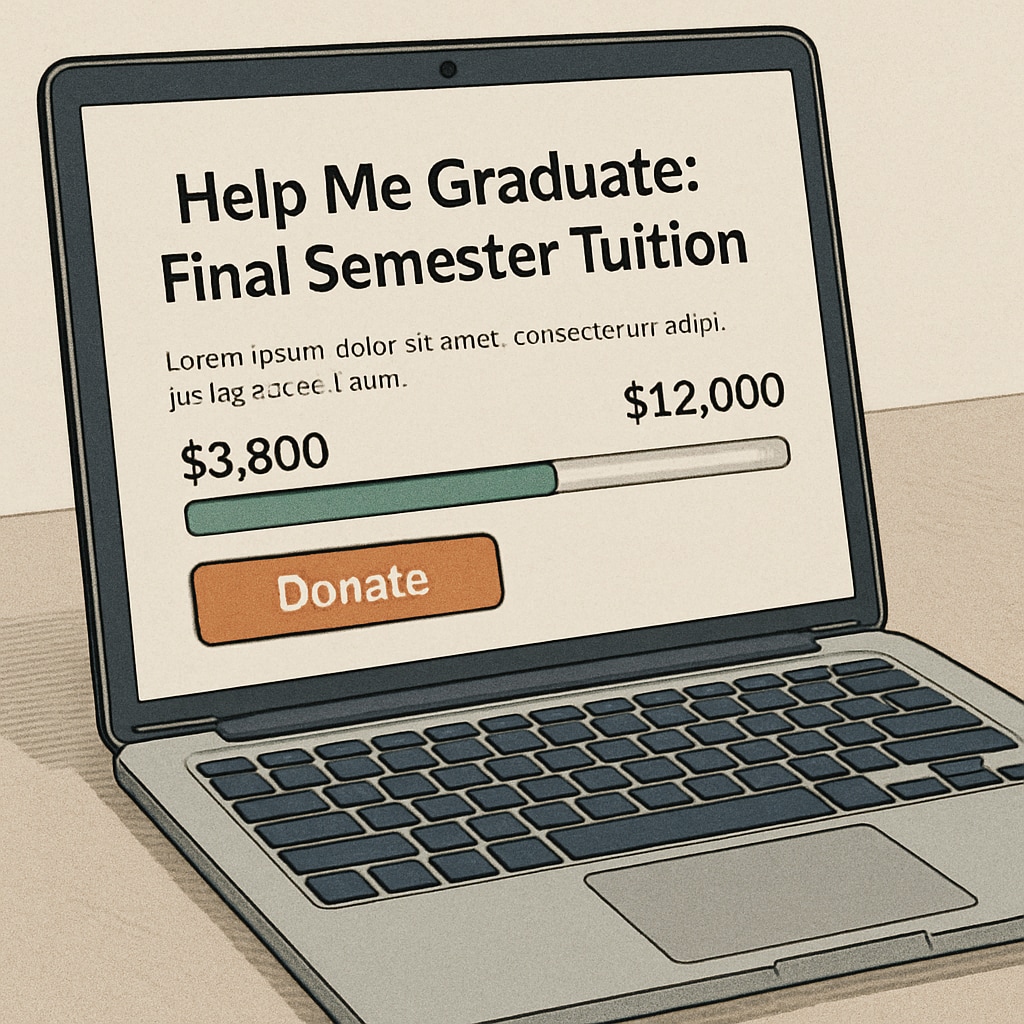For many students in the United States, the dream of completing higher education often clashes with the harsh reality of financial constraints. From navigating FAFSA (Free Application for Federal Student Aid) forms to preparing for medical school applications, tuition costs can become an overwhelming barrier. Recently, a university student took to a crowdfunding platform to raise money for their final semester tuition—a move that highlights the growing reliance on alternative solutions to combat educational inequities.
Financial Struggles in the U.S. Education System
The cost of higher education in the United States has risen dramatically over the past two decades. According to the Education Data Initiative, the average cost of tuition and fees at public four-year institutions is over $10,000 annually, while private institutions can charge upwards of $38,000. These figures often exclude other expenses such as housing, textbooks, and transportation, making the total cost even higher.
Despite programs like FAFSA, which aims to provide financial aid based on need, many students find themselves falling short of the required funds. The student profiled in this article faced precisely this challenge, realizing that even after exhausting loans and grants, they were unable to cover their final semester tuition. As a result, they turned to the increasingly popular option of crowdfunding.

Crowdfunding as a Lifeline
Crowdfunding platforms like GoFundMe have become a common resource for students facing financial hardships. These platforms allow individuals to share their stories, outline their needs, and invite others to contribute. In the case of this student, the campaign detailed their journey through college, their aspirations to apply for medical school, and the importance of completing their final semester to achieve those goals.
While crowdfunding can be a solution, it also raises questions about equity and accessibility. Not all students have the social networks or digital skills needed to run a successful campaign. Moreover, relying on public generosity highlights broader systemic issues in America’s educational funding model.

The Role of Financial Literacy
One contributing factor to these struggles is the lack of financial literacy education during the K-12 years. Many students enter college unprepared to manage budgets, evaluate loan terms, or understand the long-term implications of debt. According to Investopedia, financial literacy refers to the ability to understand and effectively use various financial skills, including budgeting, investing, and personal financial management.
Without sufficient training in these areas, students often make uninformed decisions about borrowing and spending, leading to greater financial stress during their college years. Addressing this gap could empower future generations to navigate tuition challenges more effectively.
Looking Ahead: Solutions for Students
While crowdfunding provides a temporary “lifeline” for students, long-term solutions are needed to address the broader issues of affordability and financial preparedness. Possible solutions include:
- Expanding state and federal funding for higher education to reduce tuition costs.
- Integrating financial literacy programs into high school curricula to prepare students for economic challenges.
- Encouraging institutions to offer flexible payment plans and emergency grants for students in need.
For the student highlighted in this article, their crowdfunding campaign was successful, and they were able to complete their final semester. However, their story serves as a reminder that systemic change is needed to ensure that higher education remains accessible to all, regardless of financial background.
Readability guidance: This article utilizes short paragraphs, active voice, and frequent transitional phrases to ensure clarity and engagement. Lists are used to summarize solutions, and external links provide additional context for readers.


